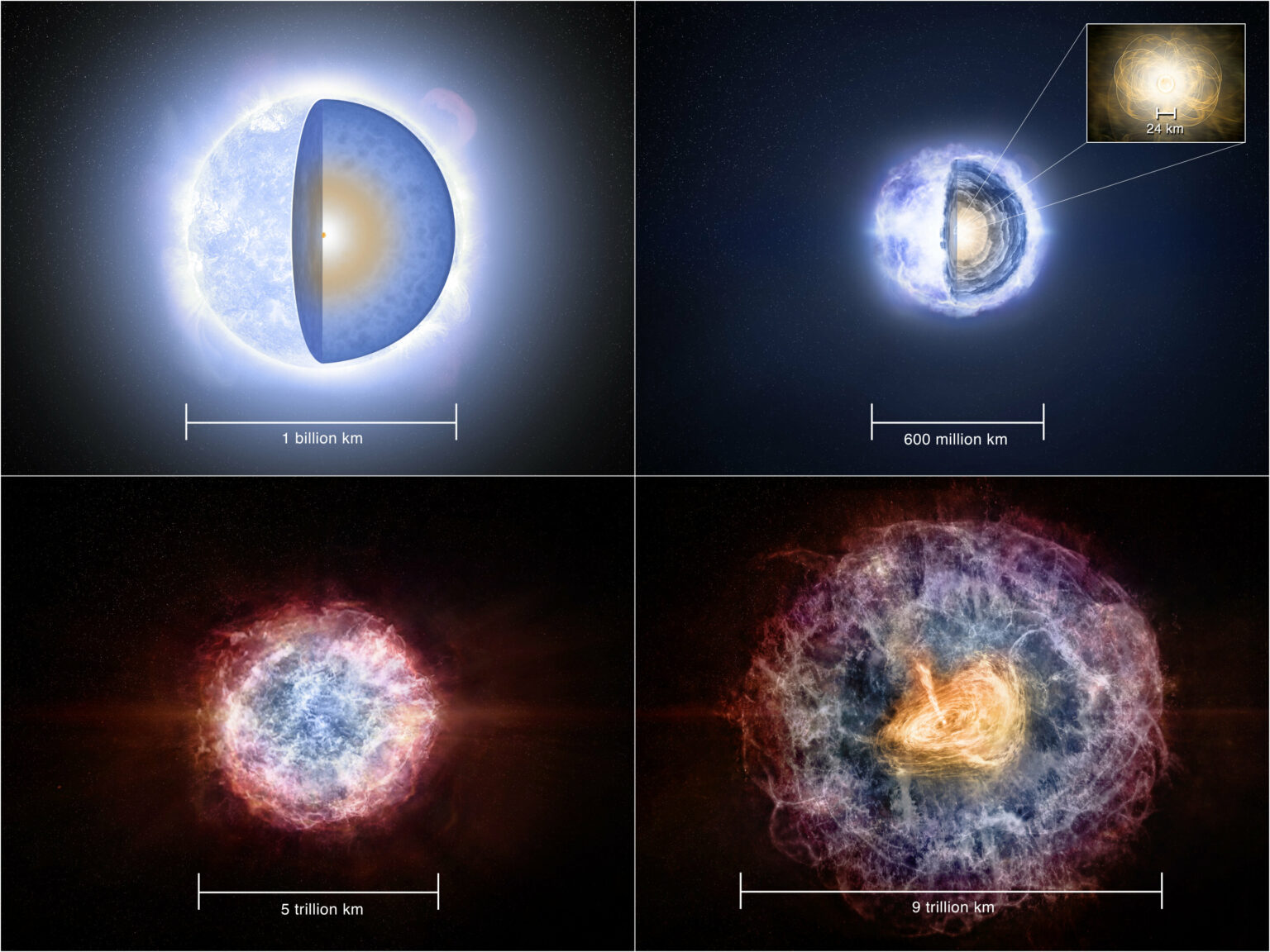Astronomers have found an unusually powerful radio source in a remote dwarf galaxy. In their opinion, it may be the youngest pulsar known to humans.

Radio source in a distant galaxy
Astronomers working with a Very large array of antennas of the Karl Jansky National Science Foundation (VLA) have recently discovered a bright radio source that is located at a great distance from us.
The dwarf galaxy SDSS J113706.18-033737.1, in which it is located, has a mass of about 100 million solar masses and is located at a distance of 395 million light-years from the Milky Way. Now star formation processes are actively going on in it, thanks to which it has become quite noticeable.
The source, designated VT 1137-0337, is missing from the first survey of this galaxy, held in 1998. But it is in the data collected in 2018, 2019, 2020 and 2022. For some time, scientists have been speculating about what it is. It was assumed that it could be a supernova, a gamma-ray flash, or a star that is torn to pieces by a black hole. However, the only truly worthy candidate turned out to be a young pulsar surrounded by a nebula.
The youngest pulsar
Scientists have collected enough data to claim that VT 1137-0337 is the youngest pulsar known to mankind. It appeared in the sky less than 20 years ago. But this does not mean that the supernova that created it exploded at that time.
It could have happened 60-80 years ago. Most of the mass of the dying star then formed a nebula that blocked the pulsar’s radiation. But over time, it expanded and radio waves began to pass through it. In any case, several decades are literally yesterday by cosmic standards. Although on the other hand, the distance of almost 400 million light-years means that it actually exploded again even before the first dinosaurs appeared on Earth.

The reason for the very powerful radio signal from VT 1137-0337 is precisely the nebula. Magnetic forces from a neutron star disperse charged particles in it, and they emit energy. In addition, it may turn out that this field is strong enough, and then the object will turn out to be a magnetar. Perhaps fast radio pulses are generated by such objects.
According to phys.org
Follow us on Twitter to get the most interesting space news in time
https://twitter.com/ust_magazine

